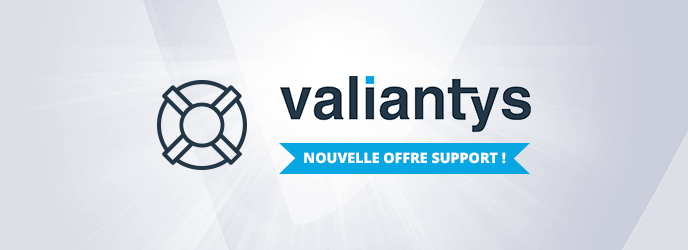“How do we offer our customers the best possible support service?” was the question we asked ourselves more than five years ago when we first created our support offer.
Initially, we created our support packages to provide local expertise to our French customers, but as the years went by, our clients really surprised us with their requirements. This, in turn, has driven us to continually improve our Atlassian support offering.
Here’s a short summary of how we’ve worked to improve our Atlassian support offer:
Step 1: understanding
We know our customers well – in fact, we’ve been working with some of them for more than 10 years. During this time, the way Atlassian tools are used has changed dramatically, leading to demand for not only new services, but support also. This is why the first step of our improvement process consisted of understanding the needs of our customers. For this, we prepared a small interview that we submitted to:
- A small segment of our customer base (encompassing different languages, support plans, usage context). Clients are often well-placed to help you improve your service, and even bad feedback is helpful!
- Internally, to our account managers and our consultants, who are consistently talking to our customers and possess a deep knowledge of their context and needs.
At the end of this phase, we had a clearer idea of both the current and future customer expectations from our support team.
Next, we went through all information we had gathered from our platform reporting: contract creation trends, customer use cases and contract renewal rates.
Step 2: analysis
Our analysis consisted of ordering all the information we had in order to extract key trends. The things that struck us were:
- Functional coverage of our support offer
Understanding why our current customers use our service was crucial. We discovered diverse usage: some use it to completely hand over their platform administration to us (often using a VPN access), others use it for validating their implementation choice or add-ons and some use it as an insurance in case they encounter a major issue or need good reactivity to fix or improve implementations completed by Valiantys. To fulfil all those needs, we needed to extend our functional coverage, as this initially included only a small number of add-ons.
- Support channels
Previous version of our support offer only allowed for creation through our JIRA portal, which was an obstacle for some clients who already had multiple ticketing tools in their organisation.
- Onboarding phase
When a client purchases a support contract, some actions need to be completed in order to get things up and running. We noticed that these actions were not openly shared with our customers.
- Business hours coverage
Our support team was only working between 8am and 6pm, which was an issue for our clients working worldwide, or for tasks that require downtime, like upgrades and reindexing.
- Response time
Our SLAs (Service Level Agreements) were not good enough for customers with increasingly critical platforms.
- Number of customer contacts with access to our support platform
Previously only three people were able to access our service, which caused issues for large organisations.
- Usage metrics
Up until now, these were provided on request, and not in a standardised format.
- Budget
Some customers sought visibility of their annual budget, which was not possible with previous plans that were based solely on an amount of hours. Once down to zero, customers had to renew regardless of whether the year was complete.
Step 3: getting things done
We now needed to identify and implement solutions to fulfil these requirements. The implementation phase was the easiest for us, since as Atlassian experts, we needed to be on top!
- Functional coverage of our support offer
We extended the functional coverage of our support so that it covers all Atlassian tools and marketplace add-ons. This was inevitable, but has seen real impact on how we train our consultants, who need real expertise across these tools and add-ons. Knowing Atlassian’s appetite for releasing new versions, this is a challenge!
- Support channels
The first step consisted of reworking our principal channel, JIRA. We were using a JIRA Core until now, whose user interface was not that intuitive. We now use JIRA Service Desk. Some add-ons were particularly useful during this transition:- Actions for JIRA Service Desk – this allows us to have our requestor reopen issues themselves.
- Extension for JIRA Service Desk – this allows us to make SLAs visible on the customer portal.
- Translation for JIRA Service Desk – this allows us to offer a fully-translated customer portal in both French and English.
- nFeed – this allows us to automatically see the creator’s organisation of tickets, and make them visible to colleagues.
- Onboarding phase
Documentation was compiled on Confluence to describe how our support services work, as well as the onboarding phase. A space in our knowledge base for our unlimited offer enables customers to document all the work undertaken on their platform.
- Business hours coverage
Business hours now span 8am to 6pm for all countries, and we offer the possibility to extend (through a paid option) these to 4am to 8am for North American customers and 6pm to 11pm for European customers.
- Response time
In addition to our Standard and Enterprise support packages, we now propose an Unlimited Support offer with a shorter SLA to better suit more demanding customers. Moreover, this is unlimited in its number of issues, useful for larger organisations.
- Number of contacts
From the Enterprise plan upwards, we now offer five named accounts instead of three, useful for our larger, geographically fragmented customers.
- Usage metrics
Using the JIRA PDF View add-on, we generate a PDF usage report for each customer that is automatically sent by email on the last day of each month.
- Budget
For customers seeking visibility across their yearly budget, we propose Unlimited Support, which allows for the creation of as many tickets as you want, without additional cost.
Step 4: deployment
The final step was deploying the new version of our support offer to:
- Our existing customer base, so friction is minimal
- Potential new customers, who need to take interest in the proposed content
Existing customers were informed of the improvement through a personalised email explaining the changes that could impact them. It was also important to inform them of new features they may benefit from and will likely renew at some point.
For new customers, we will soon be able to measure the impact of the new offer content, and hope it will be positive! As always, we remain open to feedback.
We hope you appreciate this behind the scenes drive by Team Valiantys backstage – don’t hesitate to contact us if you need more details.
Full details of all our support offers, alongside a downloadable data sheet, are available on our new website here.



